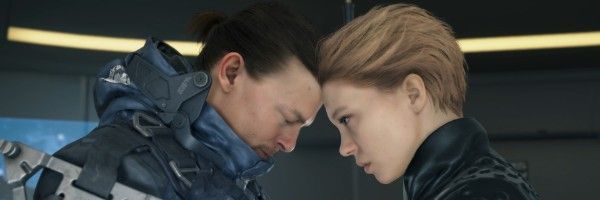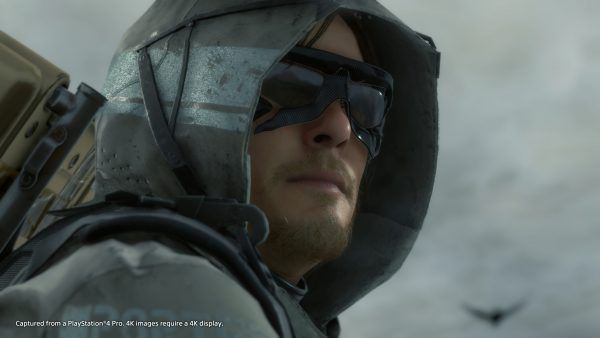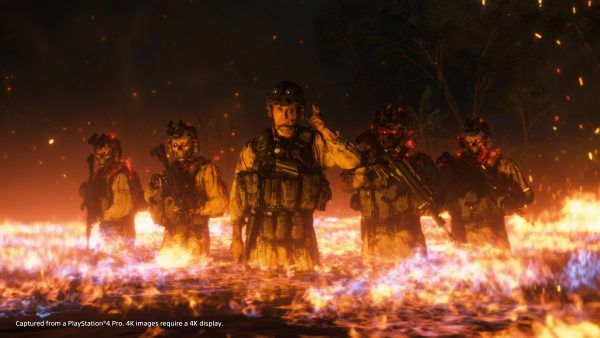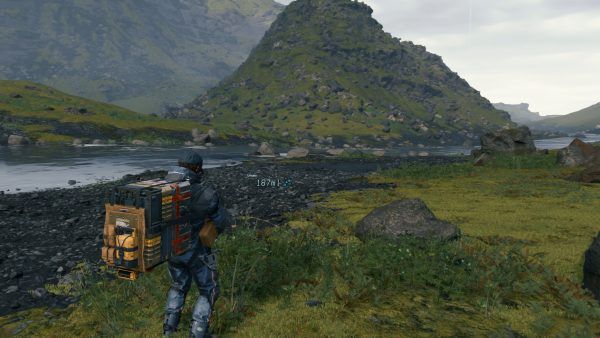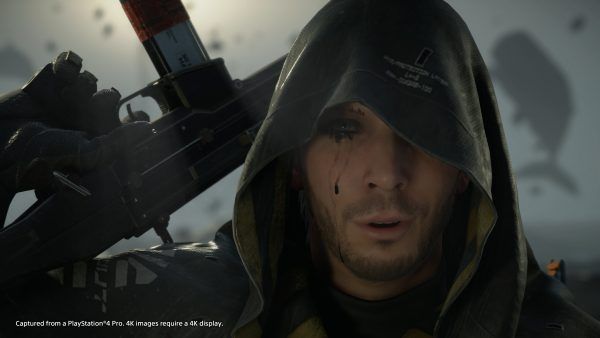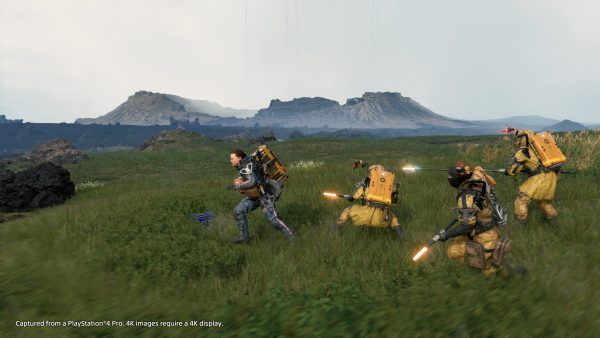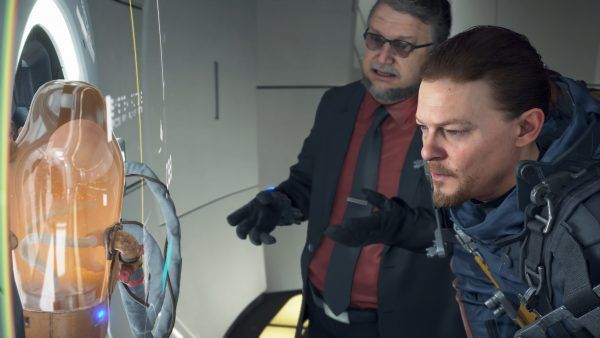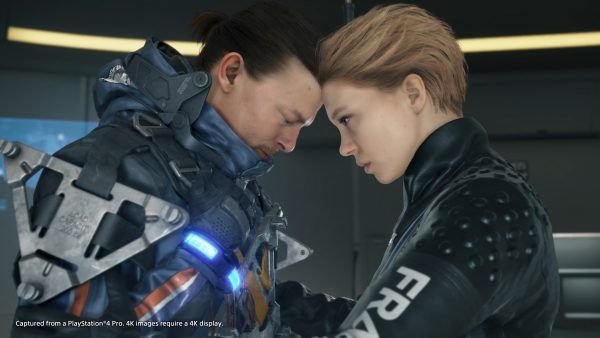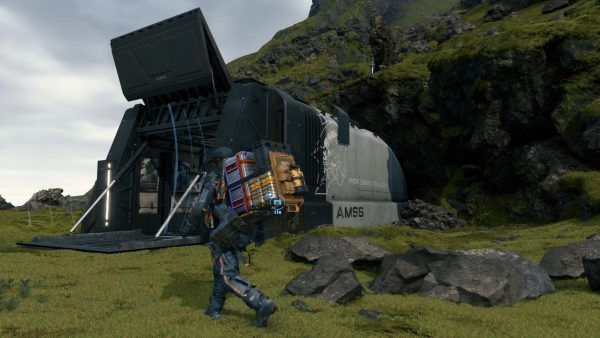[Editor's note: Now that Death Stranding is available on PC, we wanted to share our review with you, though keep in mind that these impressions were based on the PS4 version.]
Death Stranding is a game that does not respect your time. As is the case with most titles designed by famed developer Hideo Kojima, you’re going to be spending huge chunks of your playthrough simply setting the controller down and watching several minutes of in-game cinematics. In fact, the game’s opening two hours are almost entirely cutscenes, with maybe 15 total minutes of actual play time spread throughout. But the cutscenes tell a gorgeously cinematic story about connection amid isolation, and the bonds we form with those around us that transcend life and death. It’s a shame such an artfully realized story is in service to a gameplay experience that is frustratingly tedious.
Without giving away too much, the game takes place ten years after a cataclysmic event called the Death Stranding wiped out most of civilization and joined the worlds of the living and the dead. Sam (Norman Reedus) works as a porter for the BRIDGES organization, transporting cargo from settlement to settlement. Sam gets tasked by the President of the United Cities of America to try and rebuild the country’s shattered infrastructure. To do this, he’ll have to travel across the entire continent, uniting the scattered settlements and bringing them all back online one by one. It’s essentially The Postman, with Reedus in the Kevin Costner role.
But Sam is going to meet some sturdy opposition along the way. There are groups of violent separatists who would prefer the government stay dead, and they regularly carry out attacks on existing settlements. The worst of these groups is Homo Demens, led by the sinister Higgs (Troy Baker).
Even worse than Higgs are entities known as BTs, creatures who have invaded the living world from the other side. The BTs are constantly prowling to ensnare victims and drag them off to the land of the dead. Another consequence of the Death Stranding is the timefall, a rainstorm that rapidly ages anything it touches, including any living thing unfortunate enough to get caught in it. Sam’s journey will not only help rebuild society, but also unravel the mystery behind the BTs, the timefall, and the Death Stranding itself.
Death Stranding is essentially a survival action game, although it leans more heavily on that first descriptor than the second. It’s similar in many ways to The Legend of Zelda: Breath of the Wild, in that the primary activity is traversing an immense open world map, while outfitting yourself with impermanent equipment that constantly erodes until it is finally destroyed. Unlike Breath of the Wild, the action portions of the game are meted out rather sparingly, but we’ll get to those in a minute.
As I said, traversal is the meat of what you do in Death Stranding. As a porter, Sam has to march across rocky fields, clamber up craggy peaks, ford powerful rivers, trudge through muddy swamps, and cut through snow-blinding blizzards blanketing icy mountains in his quest to reunite the scattered cities of America. And you will do almost all of it on foot.
That’s right - despite being introduced to Sam as he is zooming through a timefall on a bodacious reverse tricycle, you don’t actually unlock your first vehicle until several hours into the game (I got mine at around the 10-hour mark). And even as you unlock more sophisticated modes of transportation, like long-range bikes and armored trucks, you’ll still spend 90% of the time putting creases in your boots. That’s because the vehicles only work on level terrain, which makes them functionally useless.
The terrain is unforgivingly dotted with rocks, slopes, rivers, mountains, and gorges that require you to dramatically change elevation several times on a single delivery. You’ll only be able to drive until the first steep incline, and then you’ll have to abandon your vehicle and hope it finds a loving home with another player. (Any abandoned equipment becomes available for other players to use after a certain amount of time.) Even then, the terrain is so jagged, and the driving mechanics are so cumbersome, that your vehicles will frequently come to a dead stop if they collide with a rock small enough for Sam to gently hop over on foot. The slippery vehicle physics don’t help much, either - on more than one occasion, I’ve become irrecoverably stuck and had to abandon my truck, because there’s no option to respawn your vehicle or even to flip it back over.
There is a fast travel system that allows you to jump around the map without having to slog the distance yourself in real time, but the game punishes you for using it. Any items you are carrying, save the gloves on your hands and the boots on your feet, have to be left behind in a locker, requiring you to craft an entirely new loadout wherever you arrive (unless, of course, you happen to have one stashed there from the last time you fast traveled). This was presumably done to prevent you from cheating your way through delivery missions by just warping close to the destination, but that could’ve easily been done by having the fast travel system forbid you from carrying cargo. There’s no reason for it to take all of your equipment as well, unless the intent was to discourage players from using it entirely, in which case why put it in the game to begin with.
The game introduces a zip line system that works like a teleporter to quickly shuttle you across long distances, but you have to build it one section at a time, which can prove to be more trouble than it’s worth. Like any survival game, Death Stranding features a crafting system that allows you to turn materials you scavenge in the wild into new gear for Sam and new structures for you and your fellow players to use. The only problem is, you’re generally so burdened by mission cargo and equipment that you’ll only have a few spare kilograms of free inventory space left for miscellaneous pickups. And there’s no rhyme or reason to where materials will appear, so unlike a game like Minecraft, you can’t scope out good farming areas. You just kind of have to wander around and hope you happen to stumble across a package of ceramics (and believe me, you are going to be looking for ceramics). All of that adds up to a persistent situation of coming across an area that could greatly benefit from a zipline station, or a bridge, or a generator, and not having nearly enough of the materials required to build it on hand. You can still lay down the foundation and return to deposit the proper materials later, which allows other players to see it on their maps and contribute resources as well, but it’s a long process. In virtually every case, it’s a better use of your playtime to just skip the shortcuts and hoof it.
This brings me to what is perhaps the biggest shortcoming of Death Stranding, and it is pretty unforgivable. In spite of all of its many elements, the primary mechanic of the game is keeping your balance while you walk. In fact, for the first 10 or so hours, that is literally all you do. I didn’t fight an enemy until nearly 20 hours in, which is also right around the time I unlocked my first weapon. Despite the threat of otherworldly BTs, violent separatists, and crazed bandits, you’re going to be spending most of your time carefully organizing the items you’re carrying so they don’t tip you too far to one side, and the rest of your time alternately gripping the left and right triggers to steady a cartoonishly overburdened Norman Reedus as he wobbles around on yet another 20 minute walk to yet another identical delivery terminal. Lord help you if you fall down too much and destroy even one piece of cargo, because that means you have to walk all the way back to the beginning of the mission and pick the cargo back up again. (For optional missions, you simply fail and have to wait for a period of time until the mission becomes available again.)
This seems like a good time to talk about how combat works in Death Stranding. Enemy encounters are fairly rare, and are essentially limited to two types. First are the MULEs, crazed bandits obsessed with stealing packages and delivering them, like roving gangs of Amazon drivers stricken with rabid amnesia. The MULEs are easily dispatched, though - you can usually avoid them, as their camps are clearly marked on your map, and they don’t put up much of a fight when you do run across them. I was able to defeat groups of four or five with my bare hands, and a single bola gun or nonlethal assault rifle is enough to clear out an entire camp.
Later sections of the game put you up against other types of human enemies. These sequences are breezy and fun, and allow you to use a wider array of weaponry, but they aren’t much more challenging and are over too quickly. In fact, the biggest challenge in these sequences is being able to see around the tower of cargo perpetually attached to Sam’s back. The game’s third-person perspective isn’t done any favors by having its main character carry an oversized Jenga game into every firefight.
By far the most challenging foe to deal with are the BTs, angry invisible ghosts that are able to invade the living world thanks to the Death Stranding. The sequences in which you encounter BTs are essentially stealth missions - your shoulder rig will point in the direction of the nearest BT and sound an alarm that increases in speed the closer you get to it. At first you just have to creep around them, holding your breath if you get too close so they don’t hear you. You eventually gain weapons you can use to stun or outright destroy the BTs, but the effectiveness of those weapons feels random. On my playthrough, I would be able to take out one BT with a single shot, but another identical BT would absorb round after round with no detectable effect. A grenade might take out a batch of 3 BTs in one instance, and simply piss a BT off and throw it into an invulnerable rage in another. You eventually gain the ability to stealth kill the BTs, but in my experience, the risk/reward ratio wasn’t enough to justify getting close enough to do it.
That’s because physical contact with a BT triggers a trap in which inky ghouls claw at you from the ground, pulling your cargo off your back and damaging it severely in the process. If you can’t escape them, you get dragged away into the world of the dead for what is essentially a boss fight. The BT transforms into a giant, monstrous creature and attacks you, and you can either try to destroy it or run the hell away. You’re rarely carrying the necessary equipment to kill one of these things (especially considering the whole ordeal typically begins with your gear getting ripped off your back), so your best bet is to just book. Once you get far enough away, the BT disappears, and the area is mercifully free of enemies for a short time.
The game isn’t wholly disappointing, however. The story is everything you want from a great film. It reveals its mysteries slowly but satisfyingly, never making you wait too long for an intriguing twist or shocking reveal. The cast is stellar, in particular Reedus as the reserved and soulful Sam, and Léa Seydoux as Fragile, the head of a rival delivery company coping with the aftermath of a tragic sacrifice. And the music is amazing, featuring a somber synth-heavy score and several tracks from popular bands, including numerous well-implemented songs by Low Roar. After playing through the game, I can’t help but wish Kojima had developed this wholly-unique sci-fi tale into a Netflix series. He seems to be teasing us with the idea of making a film - the cast features cameos by popular visionary directors Guillermo Del Toro and Nicholas Winding Refn, and the game is broken up into episodes that seamlessly flow together like you’re in the middle of a binge watch. My playthrough was the rare experience of impatiently waiting for the next cutscene to start, rather than the opposite.
As a whole, Death Stranding is more like an interactive art installation than a game. It’s almost a shame to have to play it at launch, because it seems that Kojima’s intent is for the world of the game to slowly be built out by all of its players. It’s not an MMO like World of Warcraft or Destiny - there is no multiplayer element, at least not in the traditional sense. But Death Stranding has a persistent online feature in which every player can share supplies and build structures, and every structure can be used, repaired, and improved upon by other players. Right now the world of Death Stranding is a blasted wasteland, with a few pockets of civilizations and one steadily growing highway system (which yours truly helped to build, thank you very much). In a few months (or possibly in a few weeks, considering Kojima’s fiercely loyal fanbase), that highway will stretch to both coasts, connecting a sprawling expanse of outposts and settlements atop a landscape that has been fully reclaimed by the human race.
But we’re not there yet, and the game’s intent does not justify the experience. However lofty Death Stranding’s message of unity and cooperation may be, the game itself is a brutally tedious chore that does very, very little to reward you for playing it.
Rating: ★★

